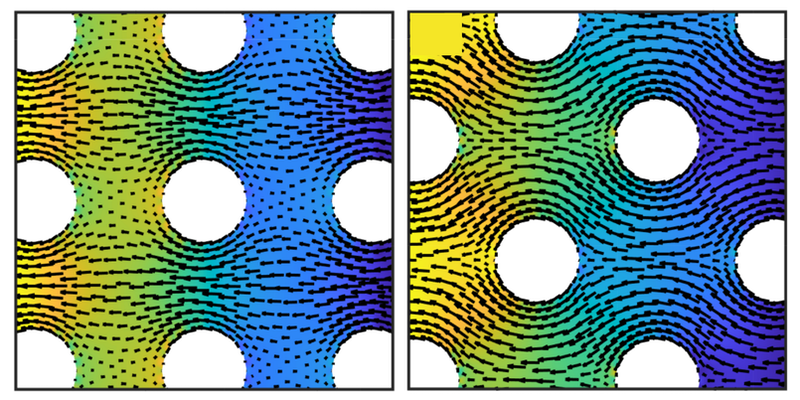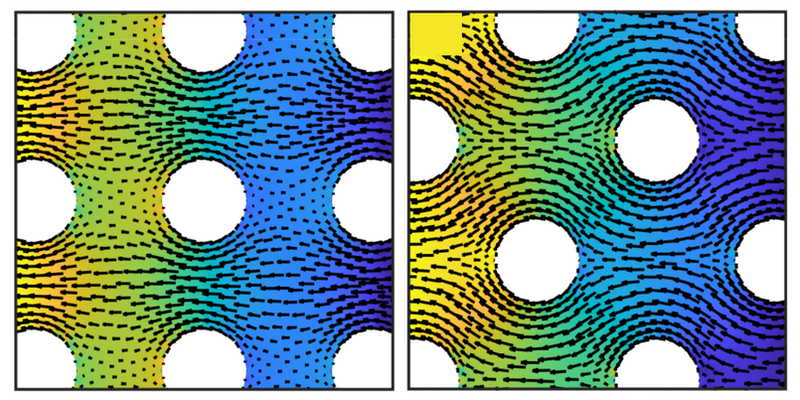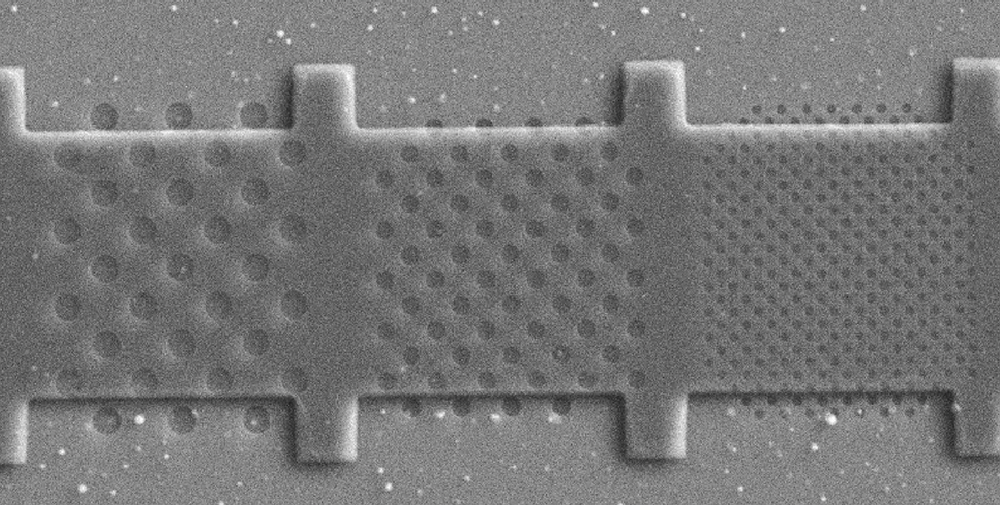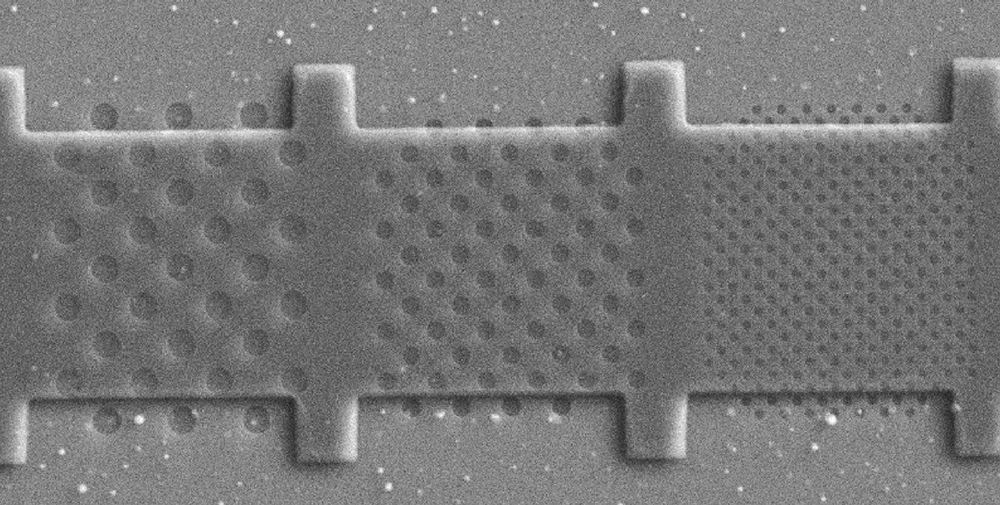Holey Material Enhances Electron Flow
Ordinarily, electrical resistance arises because electrons moving through a material scatter from impurities, vibrating atoms, and the material’s boundaries. But under some conditions, electrons can flow with exceptional ease, much like an ordinary fluid, in a regime known as superballistic transport. Now researchers have engineered a pronounced version of the effect by poking an array of holes in an atomically thin sheet of material [1]. They expect that the finding will make it easier to produce controlled superballistic effects that will reduce the power requirements of advanced electronic devices.
A key feature of superballistic transport is that the electrons move in a coordinated way, avoiding material boundaries, with nearby electrons moving along similar trajectories, much as the molecules in a liquid do, says Elena Díaz of the Complutense University of Madrid. In a liquid like water, the molecules are constantly interacting with each other and exchanging energy in a way that keeps them flowing together and enables them to flow smoothly around obstacles. Researchers have seen this so-called hydrodynamic regime of electron behavior in previous experiments, such as those in graphene (single-layer carbon) sheets, where swirling motion akin to vortices in real fluids was observed [2]. But the effect would be easier to study if it were larger and simpler to produce.
Now Díaz and colleagues have generated the same conducting regime more easily using a technique they believe will allow the phenomenon to be studied more effectively. In order to increase interactions among the electrons, some nonuniform motion is needed, such as forcing their trajectories to bend sharply and repeatedly, Díaz says. She and her colleagues sought to do this by creating a pattern of regularly spaced holes in a sheet of graphene. This so-called antidot lattice (“anti” because holes are the absence of “dots”) forces electrons to follow curved paths around the holes. “The antidot geometry is particularly good at bending the electron flow,” as well as being relatively easy to fabricate, Díaz says.
The team created a device with three distinct regions of holes of differing diameter: 100, 200, and 300 nm. In each zone, measuring 3 × 4 µm, the holes were arranged in a square lattice with the separations of neighboring holes equal to their diameters. The team sandwiched the graphene within layers of boron nitride and then applied a voltage across each zone, measuring the resulting current as they varied the temperature.
Hydrodynamic behavior leads to a decrease in electrical resistance with increasing temperature, opposite to the trend for traditional metals. The team measured such a decrease for all three antidot lattices, with the largest decrease observed for the 100-nm-diameter holes. This decrease was larger than in any previous experiments in the superballistic regime, Díaz says. She says that this unusually strong hydrodynamic effect will make it easier to determine the physical conditions—such as temperature and device geometry—that give rise to superballistic flow. The researchers also carried out detailed computer simulations of electron transport in the three lattices, finding good agreement with the experimental data.
Theoretical physicist Thomas Scaffidi of the University of California, Irvine, is impressed by the results. Hydrodynamic behavior “could have useful applications to reduce contact resistance in small devices because electrons collectively acting as a fluid can flow in small apertures and around obstacles in a smooth way,” he says.
In future work, Díaz and colleagues aim to investigate the conditions at which the superballistic regime emerges in single- and bilayer graphene by analyzing the effect of the current in addition to the temperature. As excess heat becomes an increasing challenge for electronic devices, Díaz says that the superballistic effect can help by reducing a circuit’s resistance, and thus its heat production, at least at low temperatures. “In principle,” she says,“ the hydrodynamic behavior of electrons is a very promising tool to be exploited in future 2D electronics.”
–Mark Buchanan
Mark Buchanan is a freelance science writer who splits his time between Abergavenny, UK, and Notre Dame de Courson, France.
References
- J. Estrada-Álvarez et al., “Superballistic conduction in hydrodynamic antidot graphene superlattices,” Phys. Rev. X 15, 011039 (2025).
- M. L. Palm et al., “Observation of current whirlpools in graphene at room temperature,” Science 384, 465 (2024).







